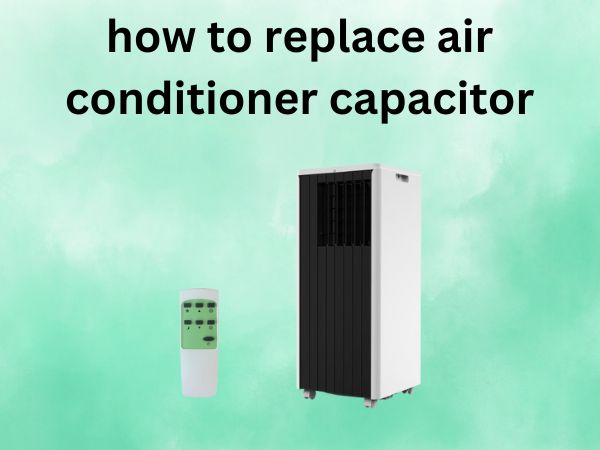How to Remove Mold from a Window Air Conditioner Safely
Have you ever contemplated the little world living inside your window air conditioner? While it’s great at keeping you cool on a sweltering summer day, it might also be hosting unwanted guests—like mold! In this article, we’ll guide you on how to safely remove mold from your window air conditioner, so you can breathe a sigh of relief—and some fresh air.
Table of Contents
Understanding the Problem
Mold is more than just an unsightly intruder—it can spell trouble for your air quality and health. But why do these sneaky spores love your window air conditioner so much? It all comes down to a perfect storm of darkness, moisture, and warmth. These elements create a mold-friendly environment right inside your cooling unit—a match made in mold heaven!
Why Is Mold in Air Conditioners a Concern?
Mold isn’t just gross; it’s dangerous. It releases spores that float through your home’s air, posing health risks, especially for those with allergies or asthma. But don’t worry, you’re not helpless against this invader. Armed with the right knowledge and tools, you can fight back!
Signs of Mold in Your Window Air Conditioner
Strange Odors
If your air conditioner smells musty or earthy, that’s mold whispering its hello. Don’t ignore those unpleasant scents, as they are your first hint of a problem lurking within.
Visible Mold
Seeing is believing—or in this case, confirming your worst fears. Look for black, green, or white fuzzy spots that might be nestled in parts of your AC unit.
Health Symptoms
Are you coughing, sneezing, or experiencing itchy eyes without a clear explanation? Your air conditioner might be spreading mold spores, affecting your well-being.
Tools You’ll Need for the Job
- Protective gloves
- Face mask
- Bucket and warm water
- Mild detergent or specialized coil cleaner
- Scrub brush
- Screwdriver (for disassembly)
- Vacuum cleaner with a hose attachment
Step-by-Step Guide to Remove Mold
Prepare Your Space
First, ensure your safety and avoid spreading mold spores. Switch off and unplug the unit. Wear protective gloves and a face mask. Consider placing an old sheet or towel beneath your air conditioner to catch residue.
Disassemble the Air Conditioner
Remove the front grille and filters. Use the screwdriver to dismantle any accessible parts, allowing you to reach deeper into your unit. Keep track of all screws and small parts—there’s nothing worse than finishing up and finding you’ve misplaced a vital piece!
Clean the Filter and Coils
The filter is where mold often starts its rampage. Wash it with warm, soapy water and a gentle scrub brush. For the coils, use a specialized cleaner to remove grime and mold build-up.
Scrub the Interior
Mix warm water with detergent in a bucket. Dip your scrub brush and start cleaning every surface you can see, reaching into nooks and crannies where mold hides. Stay vigilant—mold likes to cling on.
Reassemble and Test
Once you’ve dried and reassembled your unit, plug it back in and check for any lingering odors or signs of mold. Enjoy the fresh breeze!
Preventing Future Mold Growth
Once you’ve banished the mold, keep it at bay with a few simple habits. Regularly clean your air conditioner—especially during humid months. Ensure good room ventilation and consider using a dehumidifier if your home is prone to dampness. And remember, prevention is always better than a cure.
Conclusion
Mold in your window air conditioner might feel like an inevitable nuisance, but with the right approach, you can reclaim your fresh air. Knowing the signs, using the right tools, and learning effective cleaning and prevention techniques will ensure your unit remains a healthy part of your home.
FAQs
Q1: How often should I clean my window air conditioner to prevent mold?
Ideally, you should inspect and clean your air conditioner every month or two, especially during high-usage periods like summer.
Q2: Can mold in my air conditioner affect my health?
Yes, mold can contribute to allergies, asthma attacks, and other respiratory issues. Keeping your unit clean is crucial for good indoor air quality.
Q3: What if the mold returns after I clean it?
If mold returns, it may indicate a more significant issue with moisture levels. Ensure your room is dry and the unit is properly maintained.
Q4: Is it ever necessary to replace the air conditioner due to mold?
If mold contamination is severe and cleaning does not resolve the issue, it may be time to consider replacing the unit to ensure safety.
Q5: Are there professional services that clean mold from air conditioners?
Yes, there are professional services that specialize in cleaning and maintaining HVAC units, including the removal of mold. Consider hiring professionals if the task feels overwhelming.


